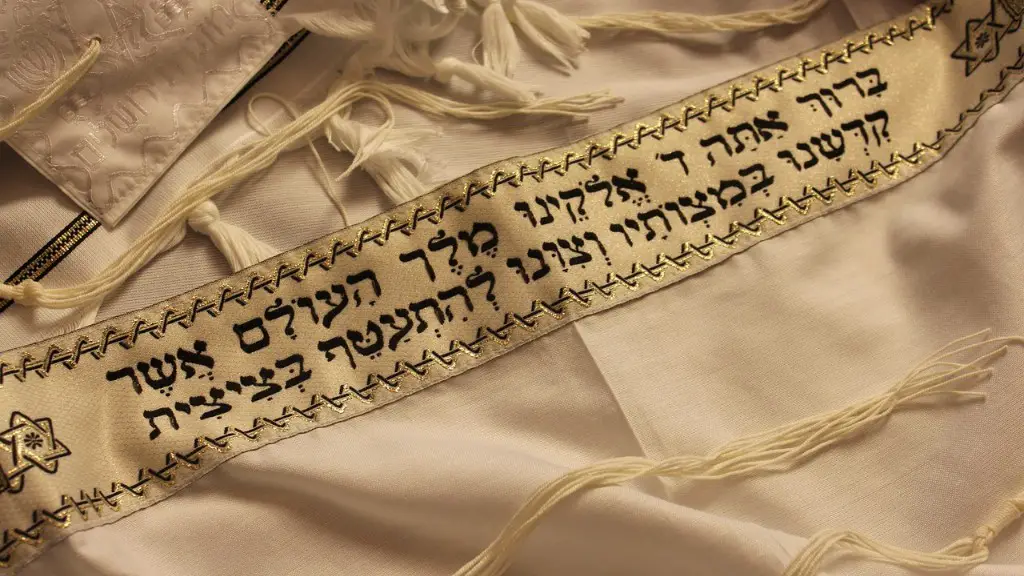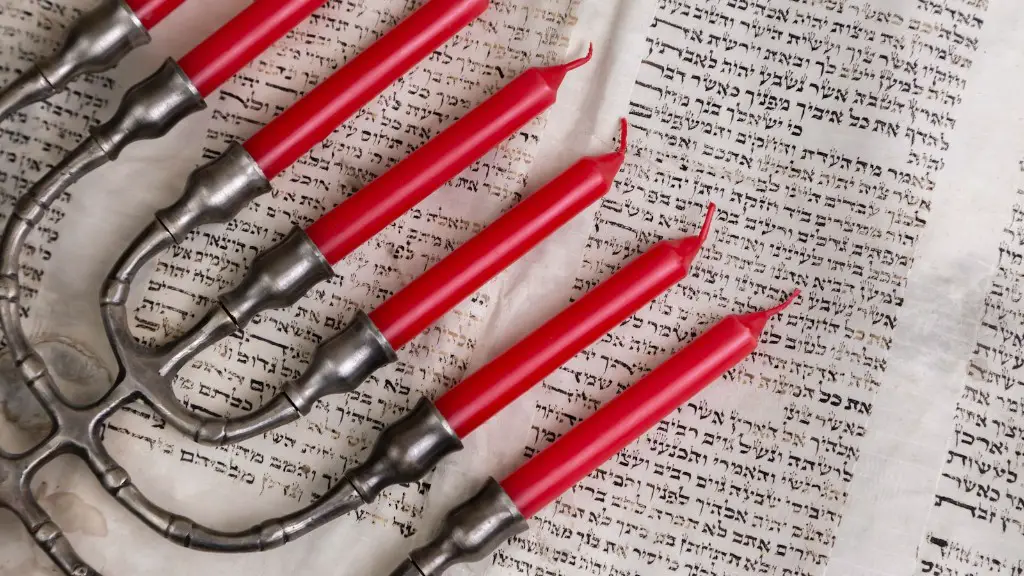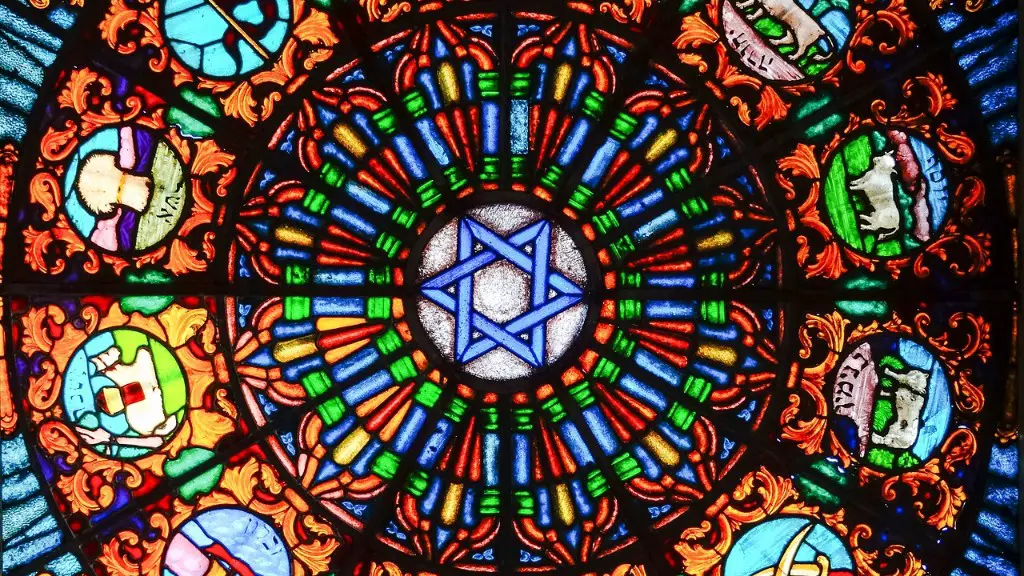Judaism, one of the oldest religions in the world, has many sacred texts. The Torah, which means “instruction” in Hebrew, is the most revered and holy of these texts and is the foundation of religious practice for Jews. Torah is made up of the five Books of Moses and is also known as the Pentateuch, the Five Books of Moses, or the Written Law. It contains narrative accounts of the creation of the world and the origin of the Jewish people, laws and regulations, moral teachings, and stories.
The Torah is the central text of Judaism and is the oldest part of the Jewish Bible. It was revealed by God to Moses on Mount Sinai and was written by him. It is the first of three divisions of the Hebrew Scriptures, the other two being the Prophets and the Writings. For Jews, the Torah is not just an important cultural and religious text but is believed to come directly from God and contains His laws and teachings.
The Torah has several sections. The first part is the Five Books of Moses, which are the books of Genesis, Exodus, Leviticus, Numbers, and Deuteronomy. These books provide narratives of the creation of the world and the relationship between God and the Jewish people, as well as instructions on how to practice the faith. Additionally, the Torah includes laws, ethics, and instructions for daily life. These are known as the commandments or the mitzvot.
The second part of the Torah is the Nevi’im, or Prophets. This section has twenty-one books arranged according to their chronological order. It contains narratives of the early history of the Jewish people and prophecies from various prophets. The origins of many of the Jewish festivals and observances are described in this section.
The last part of the Torah is the Ketuvim, or Writings. This section includes many of the books found in the Christian Bible, such as Psalms, Proverbs, Ecclesiastes, Song of Songs, and Job. The Writings are largely a compilation of prayers and wisdom literature that were written after the time of Moses.
The Torah is seen as the primary source of Jewish law and morality. It is deemed so important that even a single letter is seen as holy, and no changes can be made to it. It is used in religious ceremonies and as an authority in Jewish law courts. Jews also use the Torah to provide guidance and instruction on how to live their lives.
How is the Torah Read?
In Jewish tradition, the Torah is read aloud in Synagogue services. This practice of reading is known as the “Torah Worship”. The cycle of reading the Torah starts with Genesis and ends with Deuteronomy, and this cycle is completed once a year. It is also read on special occasions such as the Shabbat, festivals, and religious holidays such as Rosh Hashanah and Yom Kippur. On Shabbat, a portion of the Torah is read as part of a service known as the Musaf service.
The Torah is also read in a special ceremony known as a bar mitzvah, when a Jewish boy reaches the age of thirteen and is considered to be an adult. The boy reads from the Torah and is called to the front of the synagogue to do so.
In some communities, the Torah is also read on a daily basis. This practice is known as the “daily Torah reading” and is part of the “daily services” in some congregations. On Shabbat and festivals, additional readings are added as special portions of the service.
Torah Scrolls and Jewish Texts
The Torah is written on a specially prepared parchment scroll in Hebrew. The parchment scrolls are kept in an ornate wooden case, known as the Torah ark. The Torah scrolls are read from these parchment scrolls in the service on Shabbat and festivals.
In addition to the Torah, there are other important religious texts in Judaism, as well as commentaries and works of interpretation. These are known as the Talmud, Midrash, and Responsa. The Talmud is a record of Rabbinical analysis, debate, and thought, while the Midrash is a collection of stories and moral teachings. Responsa are the answers given by Rabbis to questions posed by their congregants.
The Meaning of the Torah in Judaism
For Jews, the Torah is more than just a religious text. The Torah represents the covenant that was made between God and the Jewish people at Mount Sinai. It is seen as a living connection to the past and a source of traditions and guidance for the future. The Torah is seen as a source of beauty and inspiration, and it is studied for its moral, ethical, and spiritual guidance.
In addition to its religious significance, the Torah is a source of Jewish cultural identity. Jews celebrate the giving of the Torah at Mount Sinai as a milestone in their history and the source of their shared identity. It serves as a reminder of the deep roots that the Jewish people have in their religion and culture.
Interpreting the Torah
Interpreting the Torah has been part of the Jewish tradition for centuries. The hermeneutical tradition began with ancient scholars and has been used to interpret and apply the Torah’s teachings to the lives of Jews. This has enabled Jews to make new interpretations of the Torah and its teachings in order to respond to the changing needs of the Jewish people.
In recent years, the practice of interpreting the Torah has been taken up by Jewish scholars from various religious backgrounds. These scholars use hermeneutical tools in order to interpret the Torah in a more liberal way, allowing for new interpretations and applications of the religious text. Liberal interpretations of the Torah seek to explore the relevance of the text for contemporary life, often providing a fresh and modern perspective.
Controversies Surrounding the Torah
The Torah has been a source of controversy throughout the centuries. It has been used to justify certain political and social philosophies and to defend certain religious beliefs. This has led to debates between believers and non-believers, as well as between religious groups with differing interpretations of the text. These debates can often lead to tension, as well as divisions within the Jewish community.
Although the Torah is the primary source of Jewish law and morality, it is not seen as being infallible. The interpretation and application of the Torah’s teachings have often been debated, and this process is ongoing. Jews have used their understanding of the Torah to come up with solutions to ever-changing religious and social issues.
Symbols of the Torah
The scroll of the Torah is seen as a physical embodiment of the spiritual and moral teachings of the Jewish faith. The Torah scroll is seen as a symbol of the Jews’ connection to their history and their faith. It is a reminder of God’s promises to the Jewish people and His laws. As such, it is a symbol of the Jews’ continuing relationship with God and their commitment to living a life of righteousness and justice.
The Torah is a source of inspiration and guidance for the Jewish people. Jews read the Torah not only as a religious text, but also as an ethical compass for their lives. Through the Torah, Jews have been able to develop a shared heritage and identity, and it is the foundation of Jewish faith and practice.




